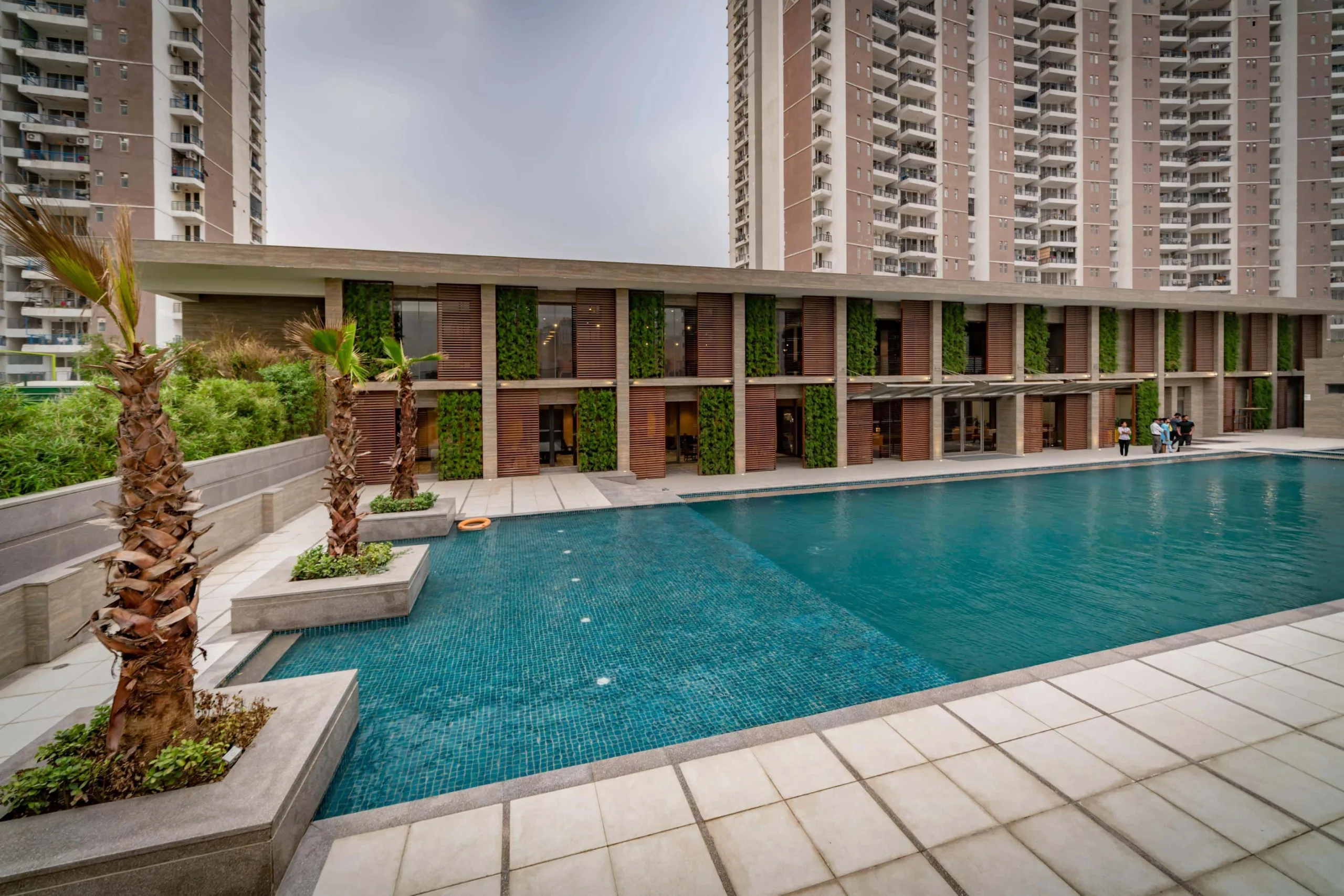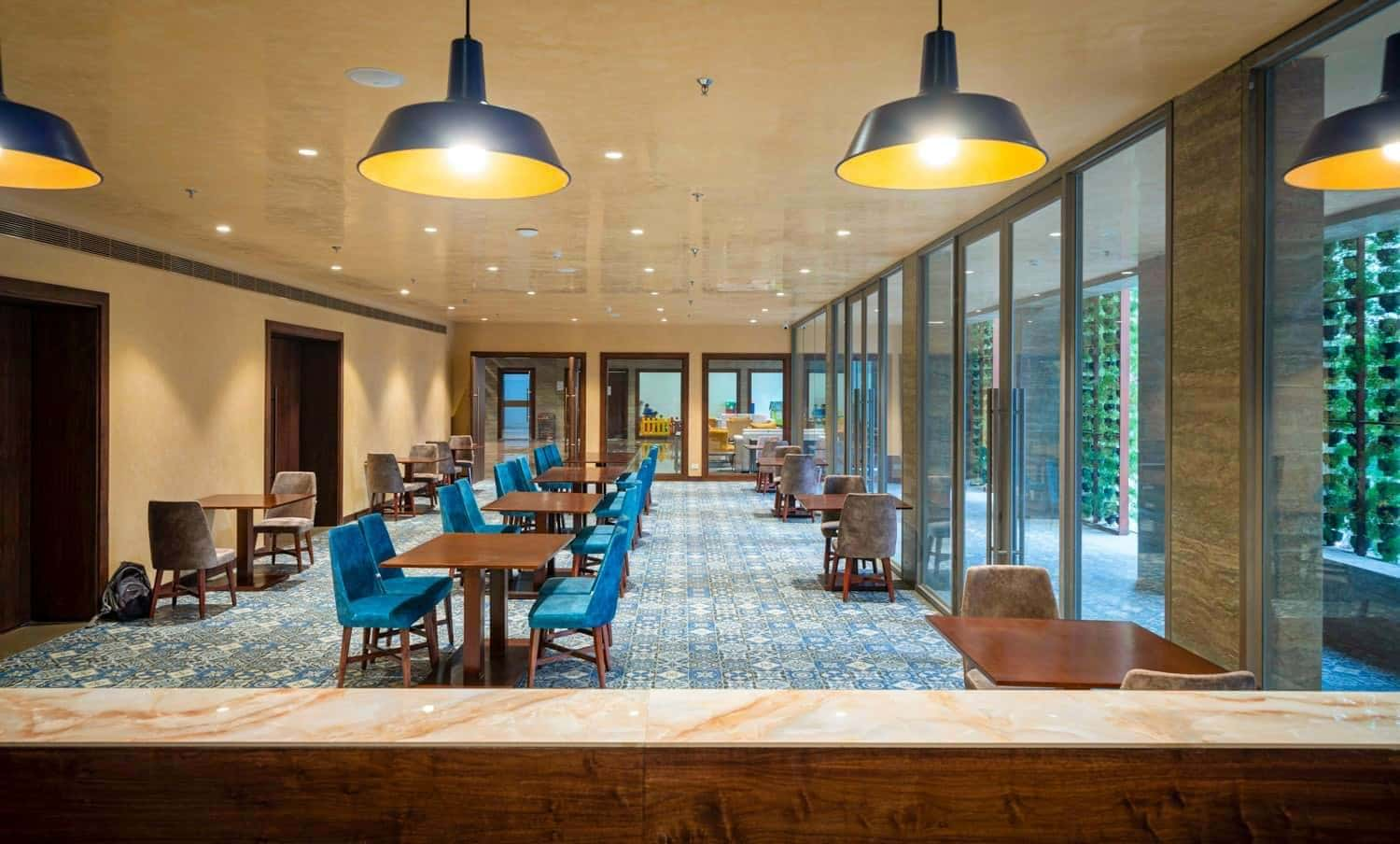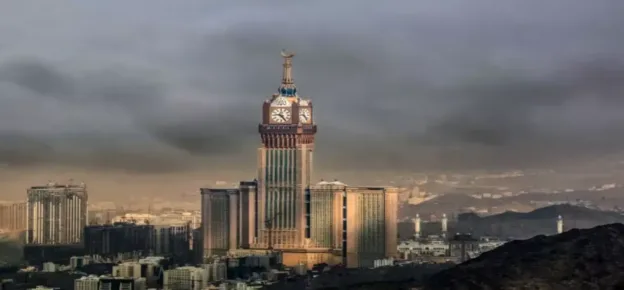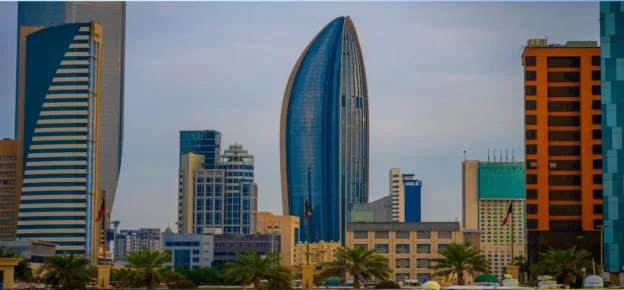Basics Architects was commissioned to design a clubhouse as a ‘communal anchor’ for an urban housing society in Noida, India. The programme for the clubhouse included a large reception and waiting area, a bar and family restaurant, a ballroom, a sports hall, a theater, and a children’s play area. The interiors were required to reflect an aura of luxury while also catering to the communal needs of the residents. The architectural design had to complement the surrounding views and flow seamlessly into both the pool deck and the central landscaped area of the society.

The footprint of the building had already been pre-established in accordance with the master plan of the housing campus. The west façade of the building overlooks the swimming pool, while the other three sides are largely opaque, facing the rear of the society. The building, along with the pool deck, is sunken in relation to the central greens of the development. The clubhouse features a small, funnel-shaped main entrance that opens dramatically into a large double-height lobby, creating a sense of surprise. This lobby also includes a partial mezzanine floor with large spans floating above the waiting area and further opens out into a veranda overlooking the pool. The restaurant and bar are located along the glazed façade and integrate seamlessly with the pool area. The sports arena and theatre are positioned in the opaque sections of the building. A children’s play area is also connected to the main lobby and extends onto the poolside deck.

The design approach adopted for the clubhouse is that of Minimalist Modernism. The evolution began with the strategic treatment of the west façade. This façade required protection from the harsh evening sun while still offering uninterrupted views of the pool. Screens were designed with these two requirements in mind, using exterior-grade wooden louvres and vertical greenery. These were alternated to create a sense of dynamism and movement in the façade. The vertical gardens add drama and soften the building’s elevation, contrasting with the hard surfaces of the deck. The rhythmic interplay of biophilic elements and wooden screens breaks the monotony of the expansive façade.
The interiors of the large lobby were designed to visually and spatially connect the main entrance with the west-facing glazing. Wooden ribbed ceiling slats maintain this flow and complement the textured grey travertine walls. The richness of the travertine adds a luxurious touch to the high-gloss wooden flooring. The ceiling has been shaped to follow the contours of the RCC roof, enhancing the spatial continuity. In contrast to the formal reception, the bar exudes a more casual ambience with exposed services and a ceiling. Patterned tiles add vibrancy and character to both the bar and the adjoining corridor. The ballroom, with its lofty ceiling and fabric-panelled walls, conveys a sense of grandeur.

The architectural and interior design of the clubhouse functions as a central anchor for the housing development, catering to residents of all age groups. Its visual elements create a compelling dialogue with users while simultaneously evoking a sense of luxury.
Quick Facts:
|















